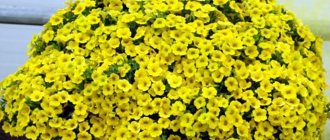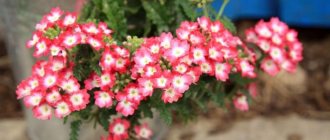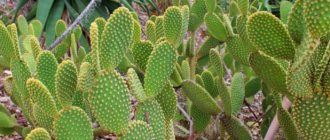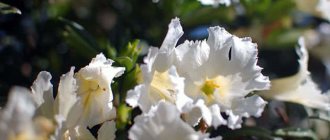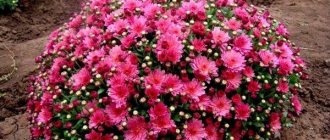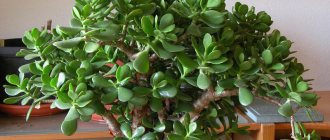Drimiopsis flower is a tuberous houseplant with contrasting variegated silver-green fleshy leaves. In terms of its endurance and vitality, it is comparable to a weed, and in terms of effectiveness it can compete with many capricious beauties. Not only will it be happy with even minimal care, but it will also become an excellent companion to other ornamental crops. And if you create good home conditions for it, it will grow and bloom for more than 10 years. Bright, resilient, with clean lines and defiant variegation - drimiopsis can claim a worthy place among the most spectacular indoor deciduous exotics.
Are Drimiopsis, Ledeburia, and Scylla the same thing?
It is not uncommon in biology when the same plant was discovered and described in completely different places, but almost simultaneously. At the same time, it was given different names, which subsequently led to classification confusion. This flower crop has two official names - ledeburia and drimiopsis. There is also a third - scylla, but it can rather be classified as folk, although in the 50-60s. last century it was found everywhere in biological reference books and textbooks. All three names can be considered synonymous, and minor distinctive features should be attributed to varietal characteristics.
Biological description
Ledeburia is a perennial that blooms almost all year round, initially classified as a member of the Lily family. Subsequently, his status was revised and assigned to the Sparzhevs. The inflorescence is white, sometimes with beige, greenish and yellow hues, collected from 20-30 buds into a raceme or spike. It has a small bulb, usually no more than 2 cm in diameter, which can have an almost superficial location and is prone to growing and forming extensive clumps. The leaves are leathery, elongated, with a variegated color - green spots or stripes on a silver background. In the lower part they are most often plain.
Watering
During the period of active growth and flowering (spring-autumn), drimiopsis must be watered when the substrate dries 2-3 cm deep - every 5-7 days, and in winter, during the dormant period - once every 10-15 days.
Important! The plant can tolerate short-term drought, but frequent waterlogging of the soil, especially in the cold season, can destroy it - excess moisture provokes root rot.
Air humidity does not matter for ledeburia; it does not require additional moisture - you should spray the flower or wipe its leaves only in extreme heat.
The water should be soft, room temperature. The ideal option is melt or rain.
Poisonous or not?
Contrary to popular belief, drimiopsis is not poisonous. Moreover, there have been no cases of allergies to it in humans or animals. At the same time, its bulb contains juice, which can cause a burning sensation if it comes into contact with the skin, and the plant itself was named because of its similarity to sea onions, drimiya and is translated as “sharp.” It is better to work with it with gloves. Drimiopsis has no contraindications for growing at home. On the contrary, like all indoor plants, it has the beneficial property of purifying the air and releasing oxygen.
Rotate the pot with the plant once a week about 1/3 of a turn, this will give a beautiful, uniform crown.
Where is the best place to put it in the house?
If conflicts often break out between family members, it is recommended to place ledeburia in the room where everyone in the household most often spends their free time.
This way the plant will be able to tune them into a peaceful and friendly mood every time they get together.
Also, a pot of drimiopsis should be placed in the room of a person who is sick or has problems sleeping. The plant will draw out the disease and help you fully relax and rest in your sleep.
Drimiopsis is an exotic and unpretentious plant . It will delight its owners not only with bright greenery and beautiful flowers, but also with a cozy, calm and harmonious atmosphere in the house.
Views from photos
More than 20 species of this flower have been described in nature, but only two of them are found in home cultivation.
Drimiopsis Kirka or Ledeburia botryoides
Perennial up to 40 cm in height with a round white bulb. The leaves are up to 5 cm wide, pointed at the end, reaching 35 cm in length. The petioles are small or absent altogether. The inflorescences are spike-shaped, with a faint pleasant aroma. Flowering occurs in spring and summer. By the end of autumn, some of the foliage is lost, and the remaining ones fade and lose the brightness of their color until they become monochromatic. This should not be a cause for concern as the plant is preparing for the resting phase.
Drimiopsis spotted or Ledeburia petiolate
Unlike the previous species, the leaves are planted on fairly long petioles, up to 15 cm. It blooms a couple of months later and can bloom until October. White flowers have a yellowish or gray tint. After flowering, it also begins to lose its variegation and prepare for a period of rest. The monochromatic leaves soon begin to fall. In the spring, the bulb will produce new ones with the same color.
Spectacular foliage, delicate aroma, durability and... modest inflorescences
Drimiopsis (Drimiopsis) is a genus of herbaceous perennials, evergreen or deciduous, belonging to the Hyacinth subfamily of the Asparagus family. The plant is also known as Ledeburgia and has the nickname Scylla. Its homeland is southern and eastern Africa (South Africa, Mozambique, Tanzania, Kenya). In nature, drimiopsis is a ground cover plant that forms continuous carpets of leaves. At home, it most often forms sockets.
The first name translated from Greek means “similar to drimia.” Indeed, upon closer examination, the plant is very similar to sea onions. The second is given in honor of the naturalist and researcher of African flora Karl Friedrich von Ledebur, who founded the first school of floristry in the Russian Empire and was appointed director of the first botanical garden. Drimiopsis is now almost never called Scylla, but in books on botany and floristry published in the 19th century, this nickname is found everywhere.
Drimiopsis is a good example of how a tropical plant can successfully exist at home without requiring extra effort from the grower
Like all hyacinths, this is a bulbous plant. The bulb is oblong, with chocolate-brown integumentary scales, more than half of it is located above the soil surface.
Drimiopsis bulbs outside the pot can easily be mistaken for ordinary onions
The leaves are dense, thick, glossy, plain or patterned. The shape resembles a heart or an elongated oval with a sharply pointed tip. Darker spots and dots are randomly located on the general olive-green background. The edges of the sheet are corrugated; in the sun it slightly shimmers with silver. The average length of the leaf blade is 15–20 cm. The petioles are also quite elongated - about 10 cm.
Drimiopsis leaves are its main value in the eyes of gardeners
The pattern on drimiopsis leaves appears only with sufficient lighting. In mid-autumn it gradually fades and disappears until next spring.
An indispensable condition for the appearance of variegated coloring on drimiopsis leaves is bright light.
Drimiopsis blooms in nature in spring or summer; at home, with short breaks, it lasts almost the entire year, with the exception of the dormant period. The flowers are small, greenish-white, grayish-pink or cream, collected in a spike or raceme. In one dense inflorescence there are from 10 to 30 flowers with a diameter of about 5 mm, spreading a light pleasant aroma that evokes associations with lily of the valley. Flowers bloom gradually, from bottom to top, due to which flowering lasts 2–3 months.
Drimiopsis blooms rather inconspicuously, but the flowering period is long and the flowers emit an unobtrusive pleasant aroma
The lifespan of the plant is quite long. If optimal conditions are created for drimiopsis, it will delight the grower for at least 10 years. In addition to decorating the interior, the flower brings tangible benefits to the owner, refreshing and disinfecting the air in the apartment.
The non-flowering Drimiopsis is often confused with Eucharis, but the latter has much more spectacular flowering. In addition, drimiopsis leaves are smaller.
Blooming Eucharis cannot be confused with Drimiopsis
An undoubted advantage for indoor floriculture is the size of the plant. The flower rarely grows higher than 30–50 cm. It does not differ in growth rate. Under optimal conditions, drimiopsis adds 2–3 leaves during the active growing season.
Caring for drimiopsis at home
Despite the fact that the birthplace of the culture is Africa, it requires climatic conditions that are not at all African and is easily tolerated by errors in care. Most often, spotted drimiopsis is bred at home, which is easy to care for.
Choice of location and lighting
Bright light is the main condition for the colorful variegation of ledeburia. It needs to be shaded from direct sun only in the hottest weather; the rest of the time it can easily tolerate even an open location. With a lack of light, it will also grow and is unlikely to get sick, however, it will no longer produce such beautiful colors. The best place is a table near the western window or its windowsill. In hot weather, the optimal place would be a north window. But by and large, ledeburia will survive anywhere.
After transplanting, purchasing, changing premises or prolonged cloudy weather, the plant needs to be in partial shade for acclimatization.
Temperature
Regular room temperature will be quite comfortable for this flower. The usual winter reduction will also benefit him, except in cases when the heating is at full strength and the room becomes even hotter than in summer. Such conditions will not please the vast majority of plants from the home collection, and ledeburia is no exception. The lower permissible limit is +8C.
Watering
You need to water the plant no more often than the earthen ball begins to dry out. Overmoistening of the soil leads to rotting of the bulb, which can be avoided by good drainage arrangements. As soon as drimiopsis begins to lose its variegated leaf color, watering should be reduced so that it can calmly enter the dormant phase. In winter, watering is carried out no more than once a week (or less frequently), but without allowing the soil to completely dry out. Simply keeping it slightly moist is enough.
The plant tolerates scanty watering better than too much watering.
Air humidity
Drimiopsis does not have any requirements for indoor humidity; no additional efforts are required in this regard. But its leaves love cleanliness, so from time to time they need to be wiped with a damp sponge. It tolerates spraying well, but you should not do it more than once a week.
Soil substrate
The soil should be of medium density, i.e. moderately loose, with a pH value of about 6 units. If the soil is too dense or clayey, it is recommended to add peat with perlite or add coarse sand. A ready-made store-bought soil mixture intended for bulbous plants or turf soil is perfect. Drainage is a must, even if it is at least a large hole in the bottom of the pot.
The bowl for ledeburia should be low and wide, since the bulbs form large clumps.
Feeding
The set of minerals that the plant loves is typical for cacti, so you can buy ready-made complexes for both bulbous and cacti. Fertilize in spring and summer, 1-2 times a month. By autumn it is gradually reduced and during the dormant period it is stopped completely. If you continue to feed ledeburia, it will not rest and will not bloom.
Can I keep it in the house?
Drimiopsis has a calming effect on the atmosphere in the house and the emotions of its owners, acts as a protector from external negative influences, and helps to improve relationships between family members and other relatives.
Benefits of the flower
In the house where ledeburia is located, an atmosphere of harmony and peace reigns; quarrels, disagreements, and conflicts occur less often. The plant helps reduce tension and irritability . Close people begin to understand each other better, solve problems calmly and together, without reproaches.
If one of the family members is often sick, a plant in his room will make all illnesses recede and help him recover from heavy physical and psychological stress.
Drimiopsis also has the ability to drive out visitors who are jealous or want to harm the owners of the flower. In the presence of the plant, such visitors begin to get nervous and worry for no reason, and leave the house, which is uncomfortable for them, as soon as possible.
Another talent of ledeburia is that it senses dark magic cast on the owners of the house . The flower prevents damage and the evil eye from entering the home and eliminates existing influences.
How can it be dangerous?
Most often, drimiopsis in the house is a sign of well-being. But there are categories of people who should refrain from growing this plant.
Since the flower symbolizes calm and tranquility, it may not have a very favorable effect on people who are too melancholy and slow , causing them to become apathetic and depressed.
Drimiopsis is not the best friend for envious and insidious people. A peace-loving plant will not help or protect owners who want to harm others. The flower will turn their evil intentions against them.
Drimiopsis transplant
Young specimens should be replanted annually; for adults, it is enough to do this once every 3 years. As young bulbs grow, they literally push the old one to the surface. In this form, it does not lose vitality, but can no longer produce beautiful leaves or peduncles. When transplanted, it is buried almost completely, but still remains close to the surface.
It is advisable to choose a bowl made of ceramic; it allows the air the plant needs to pass through, and must have a large drainage hole. It is advisable to make a drainage layer, as far as the height of the dishes allows. Since the bulbous root system is located superficially, there is no need for a large thickness of the soil layer. Usually transplantation is combined with division of clumps.
Transplanting flowering drimiopsis is undesirable; the procedure is best carried out in the spring, as soon as warm days set in.
What kind of pot does the plant need?
Due to the fact that the root system of ledeburia is poorly developed and children are formed reluctantly, you should not choose a deep container for planting, this will increase the risk of rotting of the bulbs and stop the growth of the above-ground part of the plant.
It is better to choose a wide, flat pot that has drainage holes to prevent the bulbs from rotting. It is advisable to use natural ceramics as materials because of its ability to allow air to pass through, but perlite, vermiculite, fine gravel or expanded clay are also suitable.
You can buy drimiopsis in flower shops or order it online, the cost varies from 280 to 700 rubles.
After purchase, you need to quarantine it for 2-3 weeks. You should not immediately place it in the sun - the plant must be accustomed to proper lighting gradually.
Reproduction
Ledeburia can be propagated by leaves and bulbous children. Planting with seeds is difficult due to the difficulty of ripening and collecting seeds, and there is no need for this, since the plant provides a sufficient amount of planting material for vegetative propagation.
Bulbs
The process is usually combined with transplantation; it occurs at the beginning of spring. The plant is watered well the day before transplanting, then removed from the pot and the bulbs are carefully broken. Sometimes it is advisable to use a sharp knife to separate the roots, so as not to accidentally deprive one of the children of the root part. If she herself remains undamaged, then the problem is not critical. Areas damaged during division should be sprinkled with crushed charcoal or activated carbon. Next, planting of the cuttings is carried out according to the usual rules for this crop.
Leaf (petiole)
A healthy young leaf is separated from the parent plant along with the petiole as low as possible, near the bulb itself. First, root it either in a glass of water, or in a mixture of peat with perlite or turf with sand. If there is a need to obtain several copies from one sheet, its plate is cut into small fragments while preserving the central vein (4-5 cm). You can also cut the petiole into pieces. Leaf fragments are placed on a moistened nutrient substrate and pressed with glass. The cuttings are simply buried halfway into the soil. The glass is periodically lifted to prevent the formation of mold, and at the first signs of rooting it is removed completely.
Pests and diseases
Although drimiopsis is highly resistant to pests, it can still be affected by scale insects and spider mites. If there is a danger of infection, soap or alcohol spraying (50% solution) will serve as a good prevention. If infection has already occurred, you will have to buy insecticides (for example, Bankol or Actellik). Most of them have a pungent odor; this issue should be checked with the seller or sprayed outside of residential premises. As for diseases, the vast majority of them are caused by errors in caring for drimiopsis.
The plant is very attractive to cats. They can cause great damage to it - jumping on it, breaking it, gnawing stems and leaves. If there are cats in the house, you need to make sure that the flower is inaccessible.
Signs and superstitions
Some believe that this plant should not be kept at home, while others believe that it is the opposite. There is an opinion that if dark spots on the leaves disappear in the summer or spring , then damage or the evil eye has been cast on the family.
It is also believed that drimiopsis calms the nervous system, prevents quarrels and improves relationships between relatives . It has a particularly positive effect on those born under the sign of Pisces.
Scylla also establishes harmony and instills positive emotions in those who visit the home.
Possible growing problems
The plant usually tolerates minor mistakes and shortcomings in care; in this regard, it cannot be classified as a capricious flower. But some errors can cause visible changes.
- Blackening of the petioles indicates rotting of the bulb. Regardless of the time of year and growth phase, the plant is replanted with a complete revision of the bulb and removal of its damaged parts.
- The petioles become too long and thin, and the leaves turn pale and also become thinner. The flower does not have enough light.
- If drimiopsis leaves turn yellow over their entire area, this indicates insufficient watering. But, if this happens in winter or late autumn, this is a normal process and does not require intervention.
- Rotting of part of the leaf occurs due to excessive watering.
- The appearance of a white coating on the soil is a sign of souring and excess moisture. Most likely, the drainage layer is made poorly or is missing. A transplant is required.
- The plant does not come out of dormancy. There is no exact time when the rest phase should end. Perhaps it later retired due to the conditions of detention or simply did not rest due to elevated temperatures or feeding. In any case, you need to wait for some signs of awakening until mid-spring, and then check the condition of the root system.
Selecting a location
Drimiopsis feels great both in open ground and in separate containers; it can be planted in flower beds or in pots installed on open terraces and ventilated window sills, which will not harm its development.
The flower does not like fairly shaded areas and tolerates being in the vicinity of other plants well; it can be planted in multi-level flower beds and used in landscape or interior design at your discretion, combining it with other representatives of the flora.

